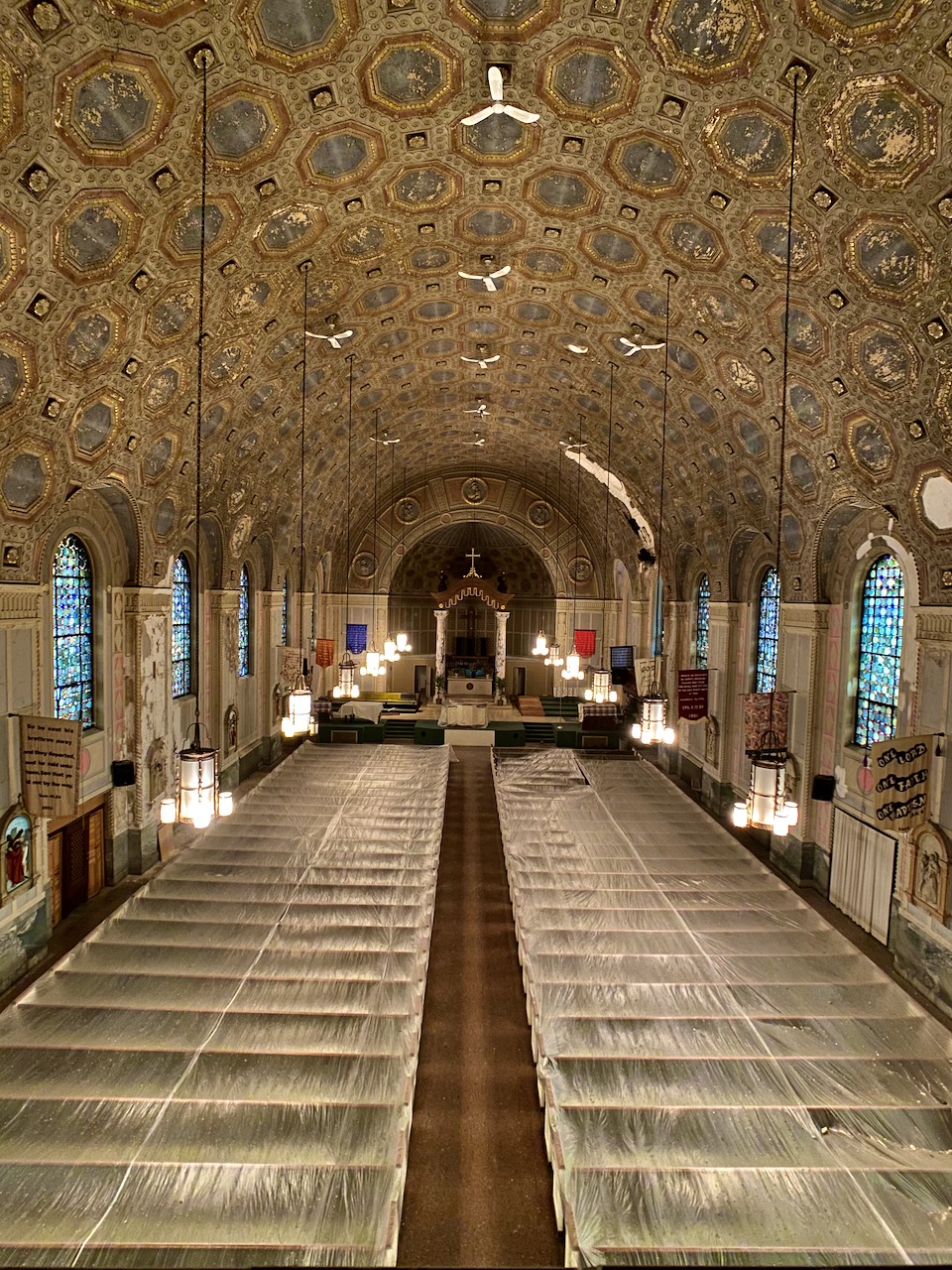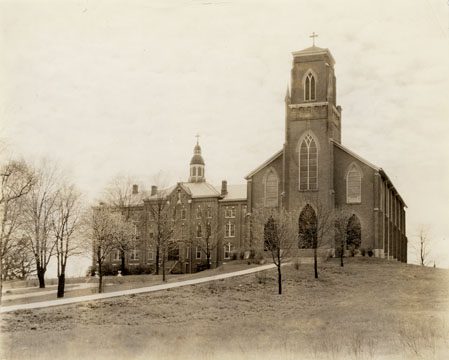Exploring the Rich Heritage of Logan Ohio Churches and Their Communities
Exploring the Rich Heritage of Logan Ohio Churches and Their Communities
Blog Article
Discovering Historic and Modern Churches for All Beliefs
The exploration of modern and historical churches acts as an extensive lens where we can examine the development of confidence and community dynamics across societies. From the elaborate layouts of ancient cathedrals to the minimal aesthetics of modern praise areas, these frameworks envelop the essence of their time and location. They are not merely churches; they are representations of cumulative ambitions and societal values. As we take into consideration the relevance of these spiritual websites, one should ponder just how they remain to shape interfaith discussion and community interaction in today's varied world.
Architectural Styles With the Ages
As architectural expressions of spirituality, churches have advanced substantially over the centuries, mirroring the varied doctrinal and social impacts of their times - Logan Ohio Churches. The building styles of churches are as varied as the idea systems they stand for, each design symbolizing certain churches and community values
Very early Christian style arised from Roman basilicas, characterized by straightforward, longitudinal structures featuring a nave and aisles. As the Middle Ages progressed, Gothic architecture took hold, noted by sharp arcs, ribbed vaults, and flying buttresses, which enabled bigger discolored glass home windows that lit up interiors with magnificent light. The Renaissance duration brought a revival of timeless aspects, stressing percentage and balance, while Baroque style introduced sophisticated details and dramatic forms, embodying the majesty of spirituality.
In the 19th and 20th centuries, the increase of various movements, such as Crafts and arts and Innovation, showed societal changes and a separation from conventional kinds. Today, contemporary churches often blend contemporary products and innovative layouts, embracing sustainability and neighborhood involvement. This rich tapestry of architectural designs shows the recurring dialogue in between faith and design, showcasing how churches remain to adjust to the spiritual demands of varied populations across the world.
Famous Historic Churches

One more impressive instance is the Notre-Dame Sanctuary in Paris, commemorated for its French Gothic layout. Its detailed façade and magnificent discolored glass windows mirror centuries of commitment and creativity, making it a symbol of both faith and durability, specifically after its recent restoration following the ruining fire in 2019.
In the Americas, the historical Goal San Juan Capistrano in California showcases Spanish colonial style, highlighting the very early Catholic missions that played a critical function in the region's cultural advancement.

Furthermore, the Hagia Sophia in Istanbul, originally built as a cathedral, represents a mix of Christian and Islamic heritage, showcasing the rich tapestry of background that churches typically embody. Each of these historic churches not just functions as a location of prayer however likewise as a social spots, protecting the narratives of varied communities throughout time.
Modern Church Innovations
Modern churches are progressively welcoming ingenious layouts and technologies to improve the worship experience and foster community interaction. These innovations manifest in numerous kinds, from building improvements to digital assimilation. Several contemporary churches feature open, versatile rooms that can be easily reconfigured to suit diverse tasks, such as services, celebrations, and curricula.
Integrating modern technology is extremely important in modern-day church layout. Top quality audio-visual systems, live streaming abilities, and interactive display screens permit churchgoers to connect not only within their walls but also with a broader target market online. This digital outreach has come to be important for preserving community connections, especially in an age where lots of individuals look for spiritual links beyond traditional setups.
Sustainable style techniques likewise play a critical duty in modern-day church advancements. Many institutions are selecting eco-friendly products and eco-friendly energy resources, showing a dedication to environmental stewardship that resonates with congregants.
Furthermore, the combination of art and imagination right into praise rooms, through setups, murals, and multimedia discussions, offers to enhance the spiritual environment, making the experience my blog much more immersive. These advancements jointly show a change towards an extra vibrant and comprehensive technique to praise and area life.
Area Impact of Churches
Churches play a vital duty fit and uplifting areas, typically stepping up to resolve regional demands and difficulties. Beyond their spiritual functions, these institutions regularly participate in social outreach and supply essential services that cultivate community cohesion. Numerous churches run food banks, shelters, and therapy services, addressing problems such as poverty, being homeless, and mental wellness.
Additionally, churches often function as meeting place for neighborhood occasions, promoting dialogue and unity among varied teams. By organizing educational programs, workshops, and social occasions, they encourage individual development and cumulative empowerment. Their interaction in local advocacy efforts magnifies the voices of marginalized neighborhoods, contributing to social justice efforts.
In addition, churches commonly collaborate with neighborhood companies, enhancing their effect with collaborations that incorporate resources and knowledge. This interconnectedness strengthens community ties and promotes a feeling of belonging amongst homeowners.
Essentially, churches are not simply areas of praise; they are important to the social material of their neighborhoods. Their complex contributions-- spiritual support, social services, and neighborhood advocacy-- play a crucial duty in promoting resilience and positive change within culture.
Visiting Churches Worldwide
When checking out the varied landscapes of spirituality, going to churches worldwide provides an one-of-a-kind window into the imaginative and social expressions of faith. Each church works as a testimony to the history and worths of the neighborhood it stands for, mirroring architectural designs and local practices.
From the magnificence of St - Logan Ohio Churches. Peter's Basilica in Vatican City to the minimalist appeal of Tokyo's St. Mary's Basilica, these sacred areas embody an abundant tapestry of human experience. The complex tarnished glass of Chartres Cathedral in France narrates biblical stories, while the lively murals of the Ethiopian Orthodox churches depict the nation's distinctive spiritual heritage
In enhancement to showcasing imaginative mastery, churches typically function as facilities of area and social engagement, hosting occasions that enhance bonds amongst congregants. Many also provide chances for interfaith dialogue, advertising understanding and regard among different belief systems.
Traveling to these churches enables site visitors to appreciate the universal styles of hope, love, and concern that transcend cultural barriers. Whether one identifies with a specific faith or otherwise, the experience of going to these spiritual sites enhances our understanding of the human mission for meaning and connection.
Verdict

The expedition of modern-day and historical churches offers as an extensive lens through which we can take a look at the advancement of faith and area characteristics across societies. Today, contemporary churches commonly mix modern materials and innovative layouts, embracing sustainability and area involvement.Throughout background, various churches have actually emerged as renowned landmarks, each informing an one-of-a-kind tale of virtuosity, community, and faith.Modern churches are progressively welcoming innovative styles and innovations to improve the prayer experience and foster area interaction.Furthermore, churches typically serve as event locations for area occasions, promoting discussion and unity amongst varied groups.
Report this page